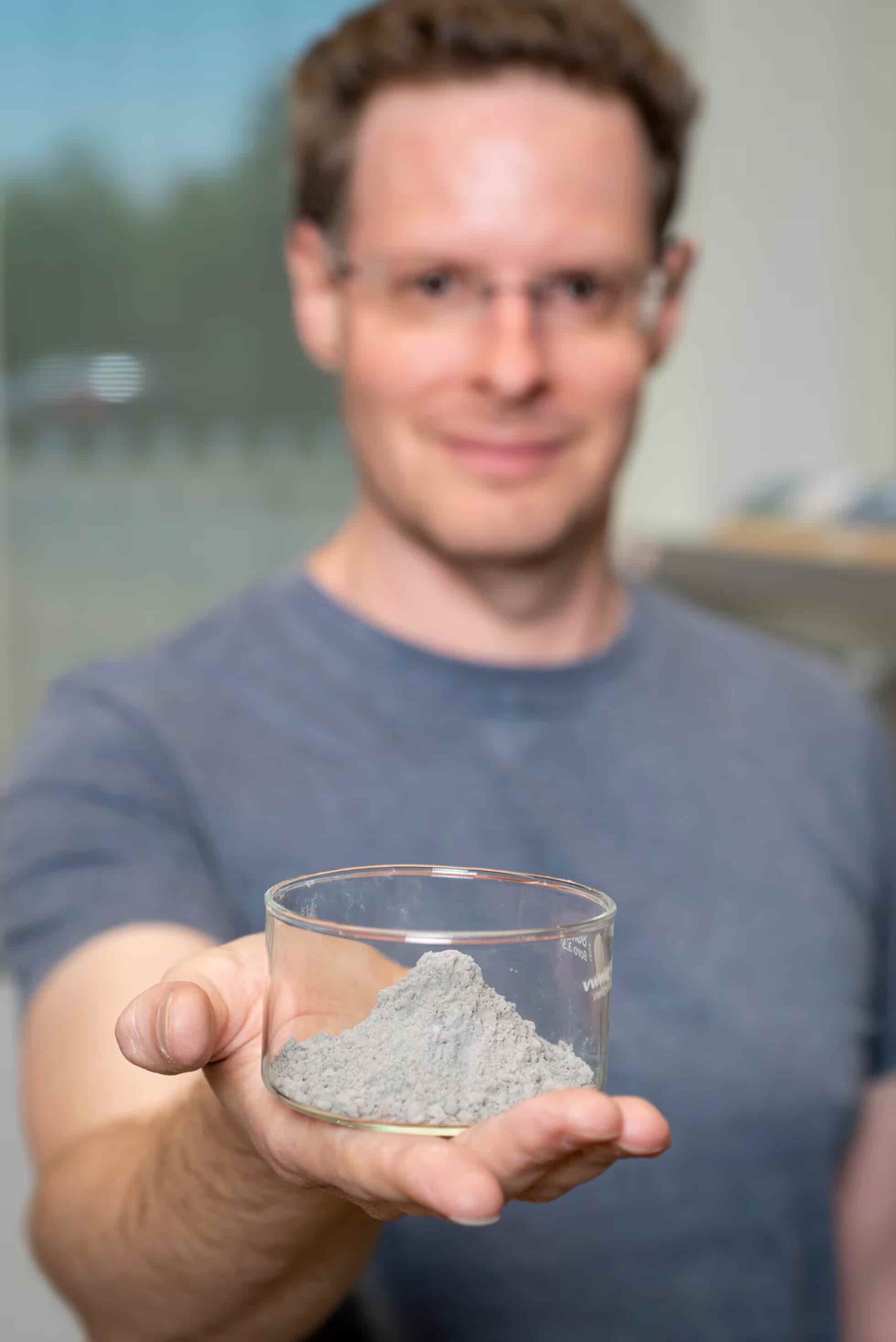Cement is undeniably one of the most practical, cost-effective, and ubiquitous materials in modern construction. Cyrille Dunant, a materials scientist at the University of Cambridge, aptly describes it as “a handful of dirt.” However, this “dirt” forms the core of concrete, the foundation of the vast majority of buildings and infrastructure worldwide. Annually, approximately four billion tons of concrete are used globally, making it the second most consumed substance after water. This extraordinary material is a blend of sand, rocks, water, and cement, which acts as the binding agent holding everything together. Despite its utility, cement poses a significant environmental challenge, accounting for 90% of the carbon emissions derived from concrete production.
The Environmental Impact of Cement Production
Dunant and his research team at Cambridge are pioneering efforts to recycle cement and mitigate the environmental footprint of the construction industry, responsible for about 7.5% of global carbon emissions. As highlighted in a report by The Guardian, Dunant, who holds a doctorate in cement studies, delves into the dual sources of CO₂ emissions in cement manufacturing:
- Energy Requirements: The production of cement demands substantial heat, often generated by burning coal, gas, or other fuels.
- Chemical Reactions: Limestone, a primary ingredient in cement, is composed of lime and CO₂. During production, heat separates these components, releasing CO₂ into the atmosphere.
Despite these emissions, the high carbon footprint of cement stems not from its inherent properties but from its immense global usage. “Cement doesn’t emit much CO₂ or consume excessive energy, but we use an enormous amount of it,” Dunant clarifies. Over the past 40 years, global cement production has tripled, according to Nature. While cement remains an exceptionally efficient and versatile material, its environmental consequences are vast.
The Challenges of Reducing Construction Emissions
The construction industry lags behind in meeting emission reduction targets. A 2023 survey by the Royal Institution of Chartered Surveyors (RICS), involving 4,600 professionals, revealed that buildings account for 40% of global emissions, with a significant portion attributed to cement. Efforts to address this issue include innovative initiatives like Sacyr’s development of concrete incorporating recycled glass, which can replace 10–20% of the required cement. Nevertheless, traditional Portland cement continues to dominate the industry.
A Revolutionary Approach: Recycling Cement with Steel
The University of Cambridge’s research team is exploring a groundbreaking method to recycle cement by leveraging the steel recycling process. This approach eliminates the need for new machinery, utilizing the same electric furnaces employed for steel.
While steel conducts electricity, cement does not. However, steel recycling involves a cleaning process that typically uses lime to remove impurities. “Lime collects all the impurities, forming a mix called slag,” Dunant explains. By substituting lime with cement—which predominantly consists of lime—the process can efficiently clean steel while simultaneously recycling cement.
Separating Cement: A Complex Process Made Simpler
Separating cement from other concrete components is a challenging and energy-intensive task, which has historically deterred recycling efforts. However, Rohit Prajapati, a researcher at Cambridge, has developed a more efficient process for separating cement and aggregates during his doctoral studies. This breakthrough has removed a significant barrier to cement recycling.
In practice, the electric furnace is loaded with steel, cement, and a small amount of additional lime to compensate for any impurities. The process yields two outcomes:
- New Steel: Ready for manufacturing into ingots, bars, and beams.
- Recycled Cement: The slag is cooled rapidly, ground into a powder, and mixed with a bit of gypsum to produce new cement. This recycled material, along with the new steel, can be used to construct buildings.
Cement: A Material Without Alternatives
Since the invention of Portland cement in 19th-century England, it has remained the gold standard in construction. Its origins trace back even further to ancient Rome, where precursors to modern cement were used. According to Dunant, “No one can conceive of certain infrastructures without concrete and cement.” Even if viable alternatives were developed, recycling the millions of tons of existing cement worldwide would still be essential.
Global Regulations and Recycling Initiatives
In the European Union, landfill directives penalize those who dispose of concrete waste in landfills, prompting countries to explore alternative solutions. In contrast, the United States, the world’s second-largest cement producer after China, has more lenient regulations, leading to significant amounts of unused concrete ending up in landfills.
The Cambridge research team collaborates with companies across the concrete supply chain, backed by European Union funding. In the steel sector, their primary partner is Celsa, a Spanish company with operations in Castellbisbal (Barcelona) and Cardiff (Wales). Cambridge researchers are testing their recycling process on an industrial scale using Celsa’s electric furnaces. Preliminary results suggest that cement recycling is not only feasible but also scalable.
Expanding the Technology
Convincing steel manufacturers of the benefits of this recycling technology is a key goal for Dunant and his team. They aim to demonstrate that cement, while irreplaceable, can be given a new life through recycling. By integrating this method into the broader industry, the hope is to significantly reduce the carbon footprint of construction and pave the way for a more sustainable future.
Cement’s irreplaceability as a construction material comes with significant environmental challenges. However, innovative solutions like the recycling process developed by the University of Cambridge offer a promising path forward. By transforming waste cement into a reusable resource and integrating it with steel recycling, this method has the potential to revolutionize the construction industry and make it more sustainable. While the journey to widespread adoption is still ongoing, the progress made so far underscores the importance of research and innovation in addressing global environmental challenges.
